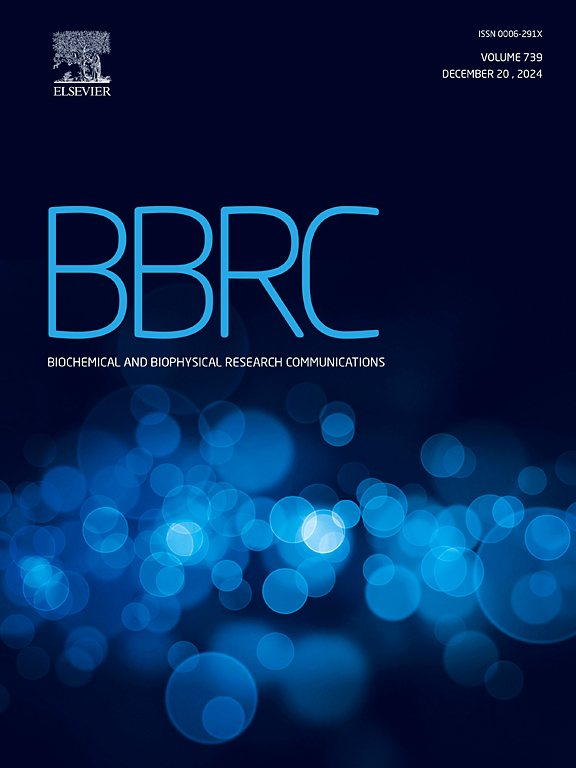An integrated approach of transcriptomics, network pharmacology and molecular docking uncovers the mechanisms of 5,6,7,4′-tetramethoxyflavone in treating cervical cancer
IF 2.5
3区 生物学
Q3 BIOCHEMISTRY & MOLECULAR BIOLOGY
Biochemical and biophysical research communications
Pub Date : 2025-03-10
DOI:10.1016/j.bbrc.2025.151611
引用次数: 0
Abstract
5,6,7,4′-tetramethoxyflavone (TMF), a dietary polymethoxyflavone (PMF) with multifaceted health-promoting benefits, has recently been identified as a potential chemotherapeutic agent for cervical cancer (CCA) in our previous study. Nevertheless, its mechanisms of action involved remain unclear. To address this knowledge gap, we employed an integrative strategy combining transcriptomic profiling, network pharmacology, and molecular docking to systematically investigate TMF's inhibitory effects on HeLa cells. Transcriptomic analysis revealed 1,127 differentially expressed genes (DEGs) in TMF-treated HeLa cells, comprising 765 down-regulated and 362 up-regulated genes. Protein-protein interaction (PPI) network analysis identified 12 hub targets ranked by connectivity: JUN, FN1, VEGFA, FOS, ITGB3, NOTCH1, ESR1, EGF, APP, DLG4, EGR1 and ITGB2. Gene Ontology (GO) enrichment analysis demonstrated significant associations with biological processes including signal transduction, cytoplasm, protein binding, positive regulation of apoptotic cell clearance, t-tubules and extracellular matrix structural constituent conferring tensile strength. Kyoto Encyclopedia of Genes and Genomes (KEGG) pathway analysis revealed enrichment in 38 signaling pathways. Molecular docking simulations comfirmed good affinities between TMF and all 12 targets, exhibiting binding energies below −5.0 kcal/mol. Our findings suggest that TMF exerts antitumor activity against HeLa cells through multi-target modulation of critical pathways including Pathway in cancer, FoxO, PI3K-Akt, mTOR, AMPK and apoptosis signaling pathway. While these bioinformatics predictions provide mechanistic insights, experimental validation through q-PCR, western blotting, and surface plasmon resonance remains essential to confirm these findings. This study establishes a foundation for further exploration of TMF's therapeutic potential in CCA management.
求助全文
约1分钟内获得全文
求助全文
来源期刊
CiteScore
6.10
自引率
0.00%
发文量
1400
审稿时长
14 days
期刊介绍:
Biochemical and Biophysical Research Communications is the premier international journal devoted to the very rapid dissemination of timely and significant experimental results in diverse fields of biological research. The development of the "Breakthroughs and Views" section brings the minireview format to the journal, and issues often contain collections of special interest manuscripts. BBRC is published weekly (52 issues/year).Research Areas now include: Biochemistry; biophysics; cell biology; developmental biology; immunology
; molecular biology; neurobiology; plant biology and proteomics

 求助内容:
求助内容: 应助结果提醒方式:
应助结果提醒方式:


